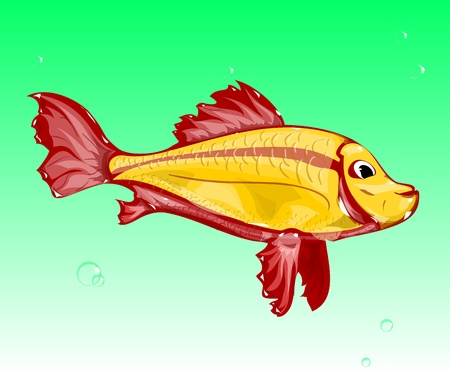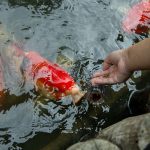Understanding Spring Weather Patterns
Spring is one of the most exciting times to go fishing, but it can also be one of the most unpredictable. As the seasons shift from winter to summer, weather patterns can change rapidly—sometimes within a single day. These changes have a big impact on fish behavior, and knowing how to read them can make or break your fishing trip.
How Cold Fronts Affect Fishing
A cold front usually brings cooler temperatures, high pressure, and clear skies. While that might sound like great weather for people, its often not ideal for fishing. Fish tend to become less active during and right after a cold front because the sudden drop in temperature can shock their system. They may move to deeper water or stay close to structure where the temperature is more stable.
The Impact of Warm Spells
On the flip side, a warm spell after a long winter can trigger increased fish activity. Rising water temperatures can encourage spawning behaviors in species like bass or crappie. During these periods, fish are more likely to move into shallower waters to feed and nest, making them easier targets for anglers.
Dealing with Sudden Rain
Spring showers are common, and while they might chase some people off the water, they can actually improve fishing conditions—if you know how to adapt. A light rain can reduce visibility in the water and on the surface, making fish less cautious. It also cools down overly warm shallow waters and washes insects and other food sources into lakes and rivers.
Quick Guide: Spring Weather Effects on Fish Behavior
| Weather Pattern | Effect on Water Temp | Fish Behavior | Fishing Tips |
|---|---|---|---|
| Cold Front | Drops Quickly | Less Active, Move Deeper | Fish Slow and Deep Near Structures |
| Warm Spell | Rises Gradually | More Active, Move Shallow | Use Fast-Moving Baits in Shallow Areas |
| Sudden Rain | Cools Surface Slightly | Increased Feeding Activity | Target Runoff Areas with Natural Bait |
Why It Matters
If youre planning a spring fishing trip, keeping an eye on local forecasts isnt just about staying dry—its about knowing when the bite will be hot. By understanding how different weather events affect water temperature and fish behavior, you’ll have a much better shot at landing that trophy catch.
2. How Water Temperature Influences Fish Activity
When planning a successful spring fishing trip, understanding how water temperature affects fish behavior is key. Different species respond to changing temps in unique ways, and knowing these patterns can help you decide when and where to cast your line.
Why Water Temperature Matters
Fish are cold-blooded animals, meaning their body temperature and metabolism are directly influenced by the surrounding water. As the water warms up in spring, fish become more active, feeding more frequently and moving into shallower areas to spawn. But each species has its own comfort zone when it comes to temperature.
Optimal Water Temperatures for Common Spring Species
Here’s a quick guide to the ideal temperature ranges for popular freshwater fish in the U.S. during spring:
| Species | Preferred Temp Range (°F) | Spring Behavior |
|---|---|---|
| Largemouth Bass | 55–75°F | Start spawning around 60°F; more active and aggressive |
| Smallmouth Bass | 50–70°F | Migrate to rocky shallows as temps rise; begin feeding heavily |
| Crappie | 58–68°F | Move to shallow brush for spawning; prime time for bites |
| Bluegill | 65–80°F | Suspend near shallow flats; start bedding in late spring |
| Northern Pike | 50–65°F | Semi-active early in spring; spawn soon after ice-out |
| Catsfish (Channel) | 70–85°F | Sporadic activity early spring; peak bite as temps climb past 70°F |
| Trout (Rainbow/Brown) | 45–65°F | Bite well in cool water; sluggish if temps go above 65°F |
The Thermometer Is Your Secret Weapon
If youre not already using a water thermometer, now’s the time to start. A simple digital or analog thermometer can tell you everything you need to know about fish activity. For example, if youre targeting largemouth bass and see that the water temp is hovering around 60°F, its a good bet they’re moving into spawning mode and hanging out in shallower cover like docks or weed beds.
Tips for Using Water Temp to Predict Feeding Times:
- Dawn & Dusk: Fish often feed more actively during low-light periods. If water temps are in their preferred range during these times, expect lots of action.
- Sunnier Days: On sunny spring days, shallow coves warm up faster—fish may move into these areas earlier than youd expect.
- Creeping Temps: Even a few degrees increase can trigger feeding binges, especially after a cold front passes through.
- Muddy vs Clear Water:Muddy water tends to warm up quicker than clear water, drawing fish into murky areas sooner in the season.
The Takeaway on Temperature Tracking
The more you pay attention to water temperature, the better youll get at predicting fish movements and feeding windows. Combine temp readings with local weather patterns, and youll be stacking the odds in your favor every time you hit the lake this spring.

3. Timing Your Trip: Best Times of Day to Fish in Spring
When it comes to spring fishing, timing can be just as important as choosing the right bait or spot. As temperatures start to rise after a long winter, both air and water temps play a huge role in how active fish are—and when they’re most likely to bite.
Understanding Daily Temperature Swings
In spring, temperature changes throughout the day are more dramatic than in summer or fall. Mornings can still be chilly, especially early in the season, while afternoons tend to warm up quickly. These fluctuations affect water temperature, and since fish are cold-blooded, their activity levels follow suit.
Why Water Temp Matters
Fish become more active as the water warms up. In cold morning waters, they tend to stay sluggish and close to deeper areas where temps are more stable. As the sun rises and warms shallow areas, fish move into these zones to feed.
Early Morning vs. Late Afternoon Fishing
| Time of Day | Water Temperature | Fish Behavior | Fishing Tips |
|---|---|---|---|
| Early Morning (Sunrise – 9 AM) | Cooler | Slower, less active | Try deeper spots and use slow-moving baits |
| Late Morning to Early Afternoon (10 AM – 2 PM) | Warming Up | More active, moving toward shallows | Target sunny banks and use medium-speed presentations |
| Late Afternoon (3 PM – Sunset) | Warmest of the day | High activity, aggressive feeding | Use faster lures and focus on shallow cover or structure |
The Sweet Spot for Spring Fishing
If youre planning your trip for maximum success, aim for late morning through late afternoon—especially on sunny days. This is when water temps are highest, and fish are most likely to be feeding actively near shorelines, around docks, or in shallow coves.
Local Tip:
If you’re fishing in southern states like Texas or Florida, warming happens earlier in the season. In northern regions like Michigan or Minnesota, youll want to wait until late spring for similar conditions. Always check local weather and recent catch reports before heading out.
4. Gear and Bait Tactics for Spring Conditions
As spring rolls in, the weather and water temperatures shift dramatically—and so should your fishing gear and bait choices. These changes can mean the difference between a slow day on the water and a reel-screaming success. Let’s break down how to pick the right rods, reels, bait, and lures based on what Mother Nature is doing.
Choosing the Right Rod and Reel
Spring fishing often means dealing with unpredictable weather and varying water clarity. Since fish tend to be more sluggish in colder waters and get more active as things warm up, you’ll want a setup that gives you versatility.
| Water Temp | Rod Type | Reel Type | Why It Works |
|---|---|---|---|
| Below 50°F (10°C) | Medium-light spinning rod | Spinning reel (2000–2500 size) | Sensitive enough for light bites when fish are sluggish |
| 50–60°F (10–15.5°C) | Medium spinning or baitcasting rod | Baitcaster or spinning reel (2500–3000 size) | More backbone for active fish; better casting control |
| Above 60°F (15.5°C) | Medium-heavy baitcasting rod | Baitcaster (3000+ size) | Handles aggressive strikes and heavier lures well |
Bait Selection: Live vs Artificial
The choice between live bait and artificial lures depends heavily on both water temperature and how active the fish are. In early spring, when the water is still cold, fish tend to be less aggressive, making natural presentations more effective.
| Condition | Bait/Lure Type | Best For |
|---|---|---|
| Cold Water (<50°F) | Minnows, nightcrawlers, soft plastics like finesse worms | Panfish, bass staying near deeper structure |
| Mild Temps (50–60°F) | Suspending jerkbaits, crankbaits, spinnerbaits | Bass, walleye moving into shallows to feed |
| Warming Water (>60°F) | Topwater lures, buzzbaits, swimbaits | Aggressive species like largemouth bass during feeding frenzies |
Lure Color and Presentation Tips Based on Weather
Sunny Days:
Use natural colors like green pumpkin or shad patterns. Fish will likely move into shallow areas where sunlight warms the water faster.
Cloudy or Overcast:
Darker lures like black-blue or chartreuse stand out better in low-light conditions. Fish may roam more freely in open water.
Windy Conditions:
Opt for heavier lures like spinnerbaits or chatterbaits that can cut through chop and create vibration—helping fish locate them easier.
Quick Tip:
If youre unsure about water temps where youre fishing, a simple thermometer clipped to your line or attached to a dock can give you valuable insight before selecting your tackle.
The key takeaway? Match your gear to both the mood of the fish and the conditions they’re experiencing. That way, whether it’s a chilly morning or a sunny afternoon in April, you’ll be ready with the right tools for the job.
5. Local Tips: Reading the Water in Your Region
Spring fishing isnt a one-size-fits-all experience—what works in Texas might not work in Oregon. Understanding how regional weather and water temperature trends affect fish behavior is key to planning your perfect day on the water. Let’s break down some common U.S. fishing regions and what local anglers should know.
Midwest Lakes
In states like Michigan, Wisconsin, and Minnesota, spring arrives a bit later. Ice-out usually happens between March and April, depending on the year. As soon as the ice melts and water temps hit the low 40s °F, species like crappie, walleye, and northern pike begin to move toward shallow spawning areas.
What to Watch For:
- Sunny Days: Can warm up shallows quickly, attracting fish.
- Wind Direction: South winds can push warmer surface water into coves.
Southern Reservoirs
In regions like Texas, Georgia, and Alabama, spring comes early and fast. Water temperatures rise quickly into the 60s °F by March. Largemouth bass begin their pre-spawn activity when temps hit mid-50s °F, so timing is everything.
What to Watch For:
- Stable Warm Weather: Triggers more consistent fish activity.
- Rising Water Levels: Often caused by spring rains; fish move into newly flooded cover.
Pacific Northwest Rivers
The rivers of Oregon and Washington bring a different set of conditions. Snowmelt from the Cascades can keep water temps cold well into late spring. Steelhead runs are highly dependent on river flow and clarity, which fluctuate with rainfall and melting snow.
What to Watch For:
- Water Clarity: Murky water slows down fish activity—wait for clearer days after rain.
- Temperature Swings: Even a 2–3°F rise can trigger upstream movement in steelhead or trout.
Regional Water Temp Guide (Spring)
| Region | Typical Spring Water Temp Range (°F) | Main Species Active |
|---|---|---|
| Midwest Lakes | 40–55°F | Walleye, Crappie, Pike |
| Southern Reservoirs | 55–70°F | Largemouth Bass, Catfish, Bluegill |
| Pacific Northwest Rivers | 38–52°F | Steelhead, Trout, Salmon (late spring) |
No matter where you’re fishing this spring, keeping an eye on your local weather patterns and understanding how they interact with regional water temps will help you find more success—and more bites—on the water.


